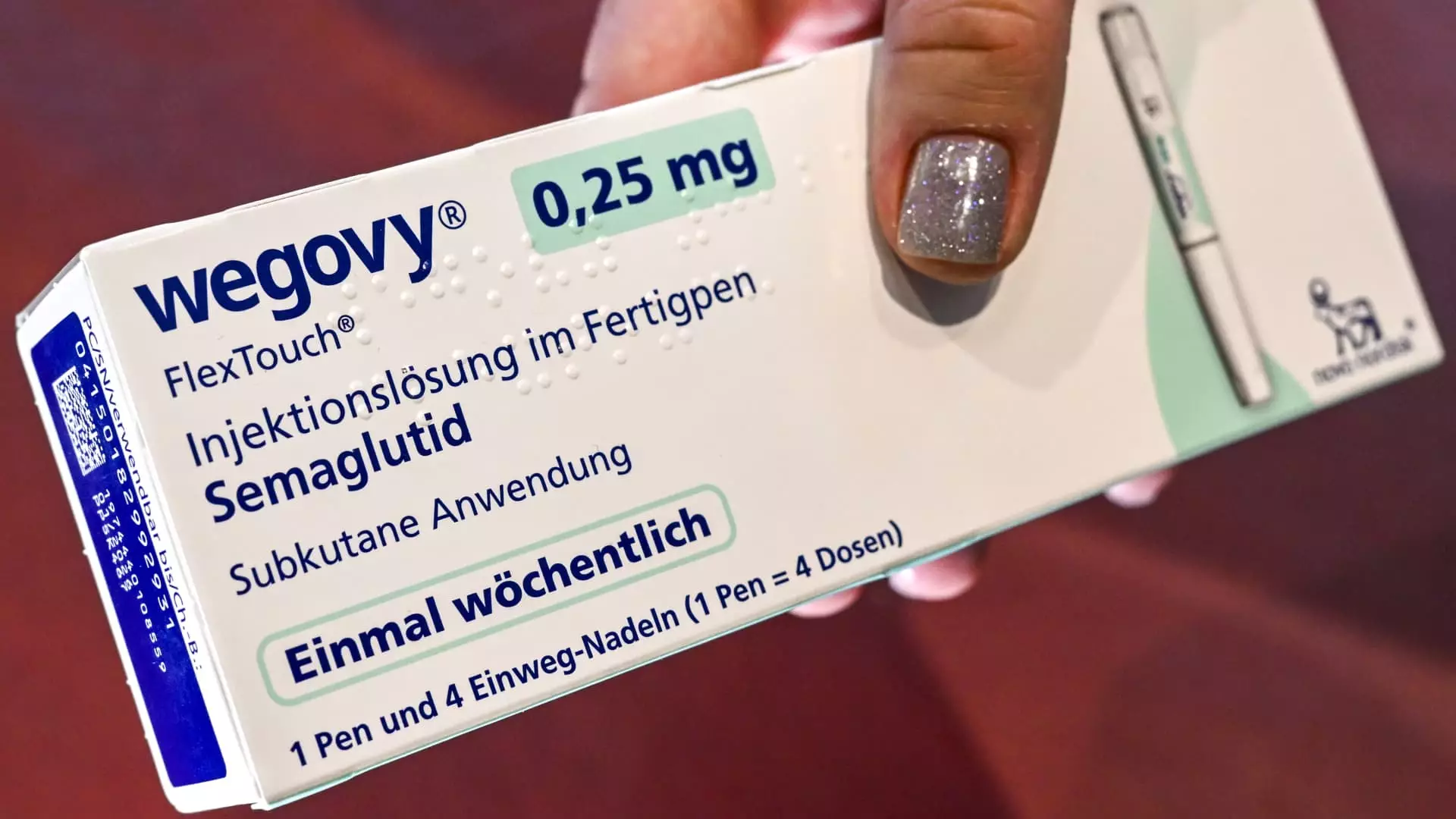The healthcare landscape is undergoing a seismic shift, notably in the realm of obesity treatment. Novo Nordisk has strategically partnered with telehealth providers like Hims & Hers Health, Ro, and LifeMD to provide the weight-loss drug Wegovy. This partnership marks a critical step forward, enabling patients to access treatment options that were previously limited due to drug shortages and prohibitive costs. This innovative move embraces technology to enhance accessibility and affordability, sparking optimism for patients who have long struggled with obesity—often in silence and isolation.
Telehealth is redefining traditional medical encounters, offering patients the convenience of consulting healthcare providers from their homes. No longer bound by geographic limitations or lengthy waiting periods, individuals seeking assistance with weight management can engage with healthcare providers more seamlessly than ever. With Wegovy now available through these services, it symbolizes more than just a medication; it highlights a cultural shift towards proactive health management that champions accessibility.
Leaps in Accountability and Pricing
The pricing structure unveiled by Novo Nordisk and its partnered telehealth services raises several intriguing questions. Wegovy will be available for $499 at NovoCare, approximately half its typical cash price, while Hims & Hers sets its starting fee at $599. Ro offers it for the same $499 but bundles it with comprehensive support services. This pricing strategy offers insight into the complexities of pharmaceutical costs, revealing that patients without insurance can now access vital medications that were once financially out of reach.
Health systems should prioritize transparency in drug pricing, especially as they seek to adjust to this new paradigm. The market forces at play will likely lead to competitive pricing models that could further drive down costs. Ambiguity in pharmaceutical pricing has long been a point of frustration; a more competitive environment could lead to equitable healthcare access across socioeconomic lines.
The Role of Compounding Pharmacies
Interestingly, the introduction of Wegovy through telehealth comes at a time when compounded versions of the drug are being phased out due to regulatory pressures. The FDA has historically criticized unapproved compounding pharmacies for undermining the safety and efficacy standards that protect patients. Even though compounding can be lifesaving for a minority of patients who face specific medical challenges, the broader risks may outweigh the benefits. Novo Nordisk’s efforts to navigate this landscape have somewhat rewritten the rules of engagement, directing consumers back towards officially approved medications.
It’s fascinating how complex the interplay of regulations and market demands is. The hard deadline set by regulatory bodies on larger compounding pharmacies underscores a critical need for compliance in an environment where the safety of treatments cannot be compromised. The differentiation between compounding pharmacies fulfilling emergency needs and large-scale operations that threaten market integrity cannot be overstated, highlighting the necessity for strict adherence to regulatory guidelines.
Expected Outcomes and Patient Experience
Novo Nordisk’s collaboration with telehealth providers also raises expectations about what a “seamless” patient experience should look like. Dave Moore, the executive vice president of U.S. operations at Novo Nordisk, emphasized the importance of this streamlined access, allowing patients to receive drugs directly at home. Whether it’s via a trusted telehealth platform or the burgeoning online pharmacy model, the hope is that patients will encounter fewer barriers to treatment.
However, this raises an essential issue—whether the holy grail of telehealth is delivering substantial support or merely a transactional element to the healthcare experience. Will patients feel genuinely cared for, or will they just become a means to generate revenue for both telehealth providers and pharmaceutical companies? As we embrace this new healthcare paradigm, maintaining a focus on patient-centered care is crucial to ensure that no one is left behind.
Telehealth as a Model for Future Healthcare
The cooperation between Novo Nordisk and telehealth entities is not merely a trend; it signifies a potential shift in how healthcare could be delivered in various therapeutic areas. While Wegovy shines a light on obesity management, similar models could potentially be replicated across chronic conditions, prescribing scenarios, preventive care, and beyond. Innovative partnerships, such as the one we’re witnessing today, could create a more inclusive health system that recognizes the diverse needs of patients.
What is clear is that the future of healthcare must embrace flexibility, inclusivity, and consumer autonomy. Just as Novo Nordisk has stepped up to address a pressing health crisis, other pharmaceutical companies and health systems must galvanize around this emerging model and consider the broader implications of access and equity. The stakes have never been higher, and the time for action is now.

